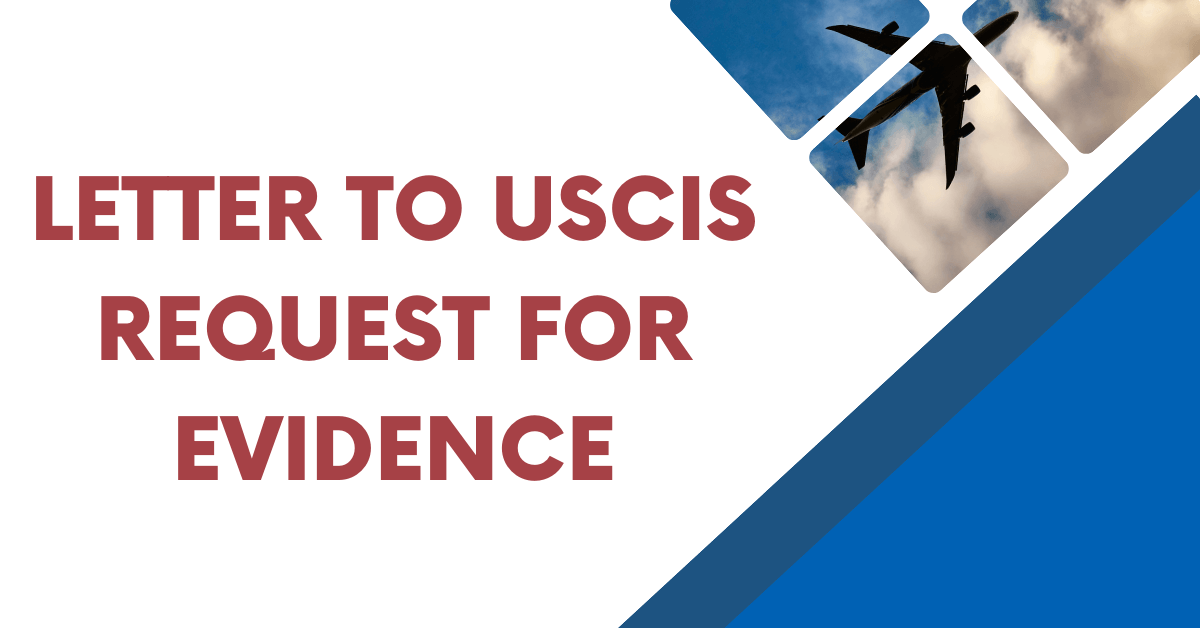A “Letter to USCIS Request for Evidence” is a communication sent to the United States Citizenship and Immigration Services (USCIS) in response to a request for additional evidence or information regarding an immigration application. Its purpose is to provide the requested documentation or clarification to support the pending application.
In this article, we will provide you with templates and examples of “Letter to USCIS Request for Evidence”. These samples will serve as a guide to help you craft a comprehensive and effective response to the USCIS request. Whether you are applying for a visa, green card, or other immigration benefits, our templates will assist you in meeting the USCIS requirements.
Our goal is to simplify the process of responding to a request for evidence from the USCIS. With our sample letters, you can ensure that your response is thorough, organized, and meets the USCIS standards.

Sample of a Letter to USCIS Request for Evidence
[Your Name]
[Your Address]
[City, State, Zip Code]
[Email Address]
[Phone Number]
[Date]
United States Citizenship and Immigration Services
[USCIS Address]
[City, State, Zip Code]
Subject: Response to Request for Evidence (Case Number: [Your Case Number])
Dear Sir/Madam,
I am writing in response to the Request for Evidence (RFE) dated [RFE Date] regarding my [visa/green card/other] application. I appreciate the opportunity to provide the requested additional information and documentation to support my application.
In response to the RFE, I am submitting the following documents:
– [List of documents]
– [Explanation of documents]
I believe that the provided information addresses the concerns raised in the RFE and demonstrates my eligibility for the [visa/green card/other] I am applying for. If you require any further information or documentation, please do not hesitate to contact me.
Thank you for your time and consideration.
Sincerely,
[Your Name]
[Your Signature]
How to Write a Letter to USCIS Request for Evidence
1. Understand the Request:
Before you start writing your letter, carefully review the Request for Evidence (RFE) from the United States Citizenship and Immigration Services (USCIS). Understand the specific information or documentation they are requesting.
2. Organize Your Response:
Organize your response to the RFE in a clear and structured manner. Make a list of the documents and information you need to provide, and ensure that you address each request thoroughly.
3. Follow USCIS Guidelines:
Follow the guidelines provided by the USCIS for responding to an RFE. This includes formatting requirements, deadlines, and any specific instructions for the type of evidence they are requesting.
4. Provide Detailed Explanation:
Provide a detailed explanation for each requested document or piece of information. Clearly explain how each document or piece of information supports your application.
5. Include Supporting Documents:
Include all requested documents with your response. Make sure they are organized and easy to read. If you are unable to provide a requested document, explain why and provide alternative evidence if possible.
6. Be Concise and Clear:
Keep your letter concise and to the point. Use clear and simple language to explain your points. Avoid unnecessary jargon or technical terms.
7. Proofread Your Letter:
Before submitting your response, proofread your letter carefully to ensure that it is free of errors. Ask someone else to review it as well to catch any mistakes you may have missed.
By following these steps, you can write a comprehensive and effective letter to USCIS in response to a Request for Evidence. This will help support your immigration application and increase your chances of approval.
Things to Keep In Mind
1. Understand the RFE:
Before you start writing your response letter, carefully read and understand the Request for Evidence (RFE) from USCIS. Make sure you know exactly what information or documentation they are requesting.
2. Provide Clear and Concise Information:
Be clear and concise in your response. Provide the requested information in a straightforward manner, and avoid unnecessary details or explanations.
3. Organize Your Response:
Organize your response in a logical and structured manner. Use headings and bullet points to make it easy for USCIS officers to review your information.
4. Address Each Request:
Ensure that you address each request in the RFE. Provide all requested documents and information, and make sure they are complete and accurate.
5. Explain Your Evidence:
Provide a clear explanation of how each piece of evidence supports your application. If there are any discrepancies or issues, address them directly in your response.
6. Be Timely:
Respond to the RFE within the specified timeframe. Failing to do so may result in delays or denial of your application.
7. Seek Legal Advice if Needed:
If you are unsure about how to respond to the RFE, seek legal advice from an immigration attorney. They can help you understand the requirements and ensure that your response is accurate and complete.
FAQs about a Letter to USCIS Request for Evidence
When it comes to responding to a Request for Evidence (RFE) from the United States Citizenship and Immigration Services (USCIS), many applicants have common questions. Here are the top five FAQs on the topic:
1. What is a Request for Evidence (RFE) from USCIS?
A Request for Evidence (RFE) is a notice sent by USCIS to an applicant requesting additional documentation or information to support their immigration application.
2. Why did I receive an RFE from USCIS?
USCIS may issue an RFE if they need more information to make a decision on your application. This could be due to missing documents, unclear information, or inconsistencies in your application.
3. What should I do if I receive an RFE from USCIS?
If you receive an RFE, carefully review the request and gather the requested documents or information. Prepare a thorough and organized response to address each request.
4. How long do I have to respond to an RFE from USCIS?
USCIS typically provides a deadline for responding to an RFE, which is usually 30 to 90 days. It is important to respond within the specified timeframe to avoid delays or denial of your application.
5. What happens if I do not respond to an RFE from USCIS?
Failure to respond to an RFE from USCIS may result in the denial of your application. It is crucial to carefully review the request and submit a complete and timely response.
By understanding these common questions and preparing a thorough response to an RFE, you can increase your chances of a successful outcome for your immigration application.
RELATED:
Lawyer Letter to Client for Payment
Daycare Termination Letter to Parent
